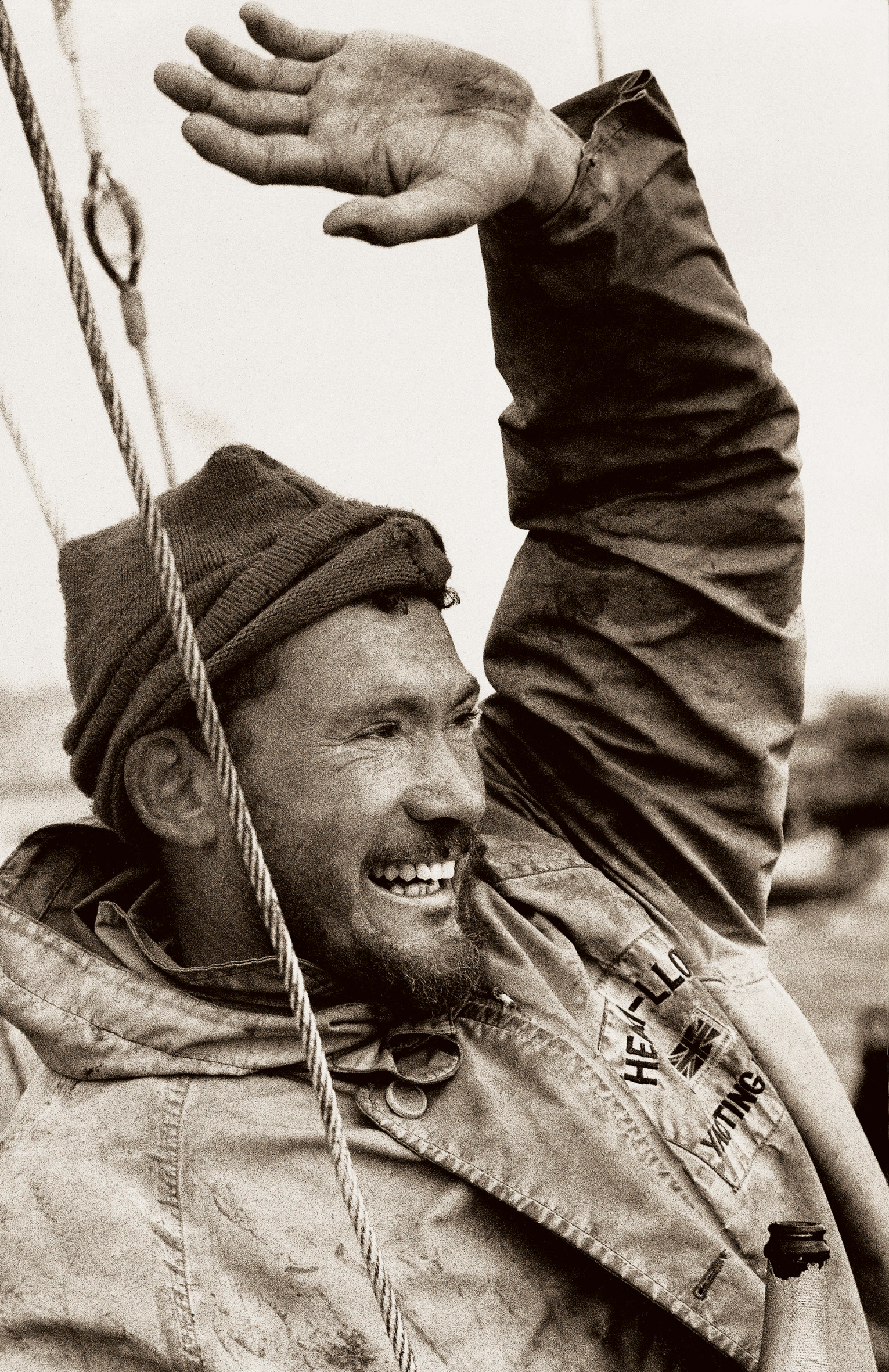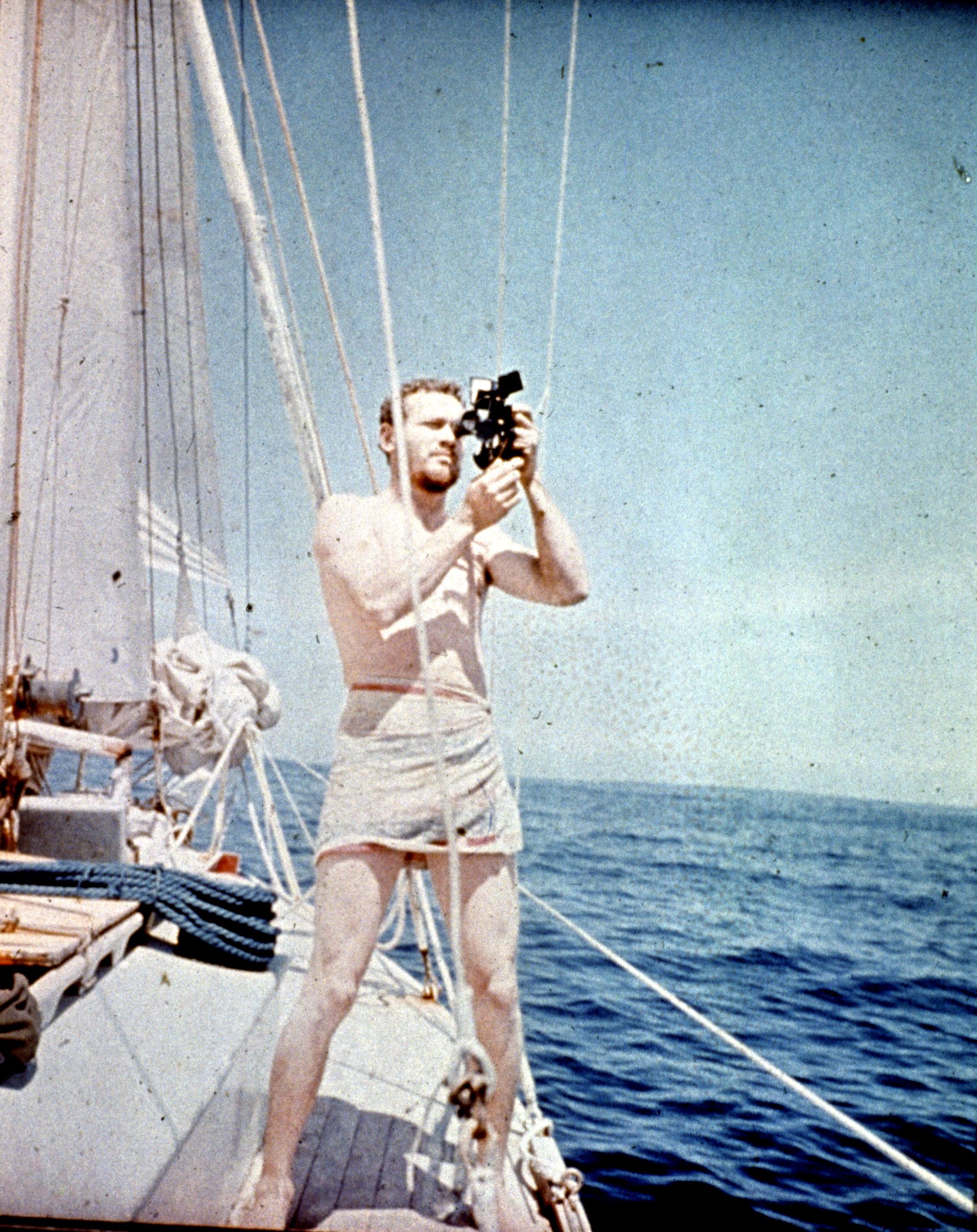THE TIMES GOLDEN GLOBE 1968/69
In 1968 the British newspaper The Sunday Times announced the award of a trophy, the Golden Globe, for the first person to sail single handed and non-stop around the world. The longest non-stop voyage until then was achieved by Sir Francis Chichester in 1966-67, when he circumnavigated the world with one stop in Australia. His boat had needed a major re-fit halfway, and no one was certain a yacht could be kept serviceable for 30,000 miles, let alone survive the conditions to be expected, nor whether a human could keep going that long alone. Nevertheless, a solo non-stop circumnavigation was the one great voyage left to be made.
On returning to the UK from India in Suhaili RKJ went back to sea as 1st Officer on the liner “Kenya” Suhaili was laid up at Benfleet and put up for sale. However Chichester’s voyage planted the seed for a non stop attempt. Efforts to find a sponsor for a Colin Mudie designed 56 foot steel yacht failed, but by this time the idea and become an obsession. “Suhaili” was withdrawn from the market and a sponsor sought.
The Golden Globe Trophy An approach to The Sunday Times lead to their refusal, but they subsequently announced the Golden Globe and that RKJ was an entrant! In all, there were 9 entrants, but because small boats sail slower than big ones, each planned to depart to suit their own schedule, and The Sunday Times was forced to announce that the start time could be between 1st June and 31st October 1968.
They also announced that the Golden Globe would be awarded to the first to complete the voyage starting in the British isles and finishing in the same port, and £5,000 would be warded to the person who made the fastest voyage. Fully loaded, (see picture of half the rations on board right), Suhaili sailed from Falmouth on 14th June 1968, the third to depart.
Progress was slow initially as RKJ was recovering from an attack of jaundice. By the time she passed the Cape of Good Hope she was in the lead, but had already been knocked down, her coach roof shifted, her water tanks polluted and her radio out of action.
“MOTHER NATURE IS AN UNFORGIVING MISTRESS, ALWAYS WITH ONE LAST TRICK UP HER SLEEVE FOR YOU WHEN YOU LEAST EXPECT IT.”
For the next 8 ½ months the only contact was when sighted from the shore or by a solitary ship. There was no means of communication and no way to tell anyone if the boat got into trouble, as with beacons or EPIRB’s in those pre-satellite days.
The loss of the radio also gave a navigational problem as it was no longer possible to obtain time checks, and accurate time is essential when using a sextant to calculate position, which was all that was available then. Weather forecasts too were now unobtainable, reliance being placed on a barometer removed from a public house, the clouds and the wind direction, but this did not help to warn of deeper storms as they approached.
More storms followed as Suhaili made her way through the Southern Ocean, sails were torn, the main gooseneck broke and off Australia her self steering finally gave up the ghost. From then on the boat had to be balanced or hand steered. After 147 days at sea she approached the pilot vessel off Melbourne to announce that she was still racing and drop off mail. A brief call off Dunedin, and grounding for 5 hours, and the she continued towards Cape Horn.



